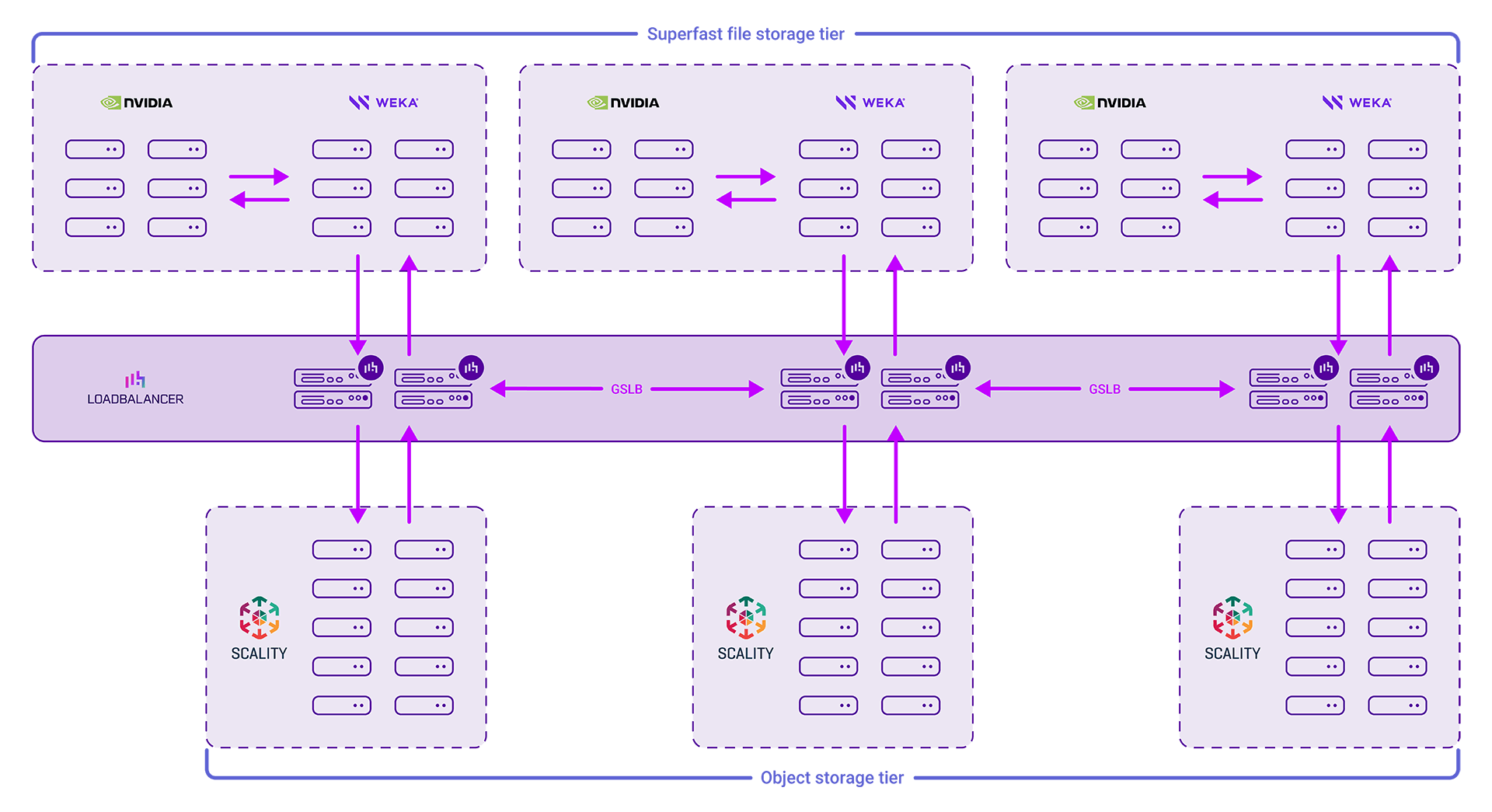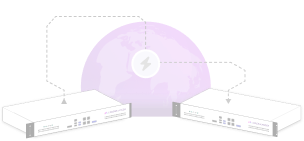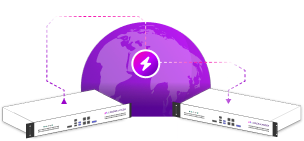
I don't need to tell you how fast ChatGPT has changed the world. Any technology that gets the general public that enthusiastic will always catch fire! It seems like everyone wants to build their very own super intelligence. How will it all turn out? Who knows...
But one of the things that has caught me and many other infrastructure specialists slightly of guard, is the explosion in physical data center demand. AI workloads are dramatically reshaping the data storage landscape. It's not hype. It's real. Within the space of a few years our customers are demanding increases in performance and capacity — not just 10X, but 100X!
Which is also why we often find Weka at the heart of these environments. Why? Because it's a high-performance, scalable file system designed to keep pace with the demands of modern AI infrastructure. Weka environments grow fast, and so do the complexities of scaling — especially when it comes to integrating Weka with backend object storage.
This blog explains why Weka and object storage are the perfect pairing, outlines the challenges of scaling, and explores how the smart use of load balancing techniques — can ensure your infrastructure delivers limitless performance, reliability, and agility.
Rise of AI driving the need for high-performance storage
AI workloads are becoming larger, more complex, and increasingly reliant on vast datasets. Whether training deep neural networks, running simulations, or enabling real-time analytics, organizations need a storage architecture capable of delivering high throughput and ultra-low latency — all while scaling seamlessly to accommodate growing datasets.
This is where Weka stands out. Built for speed and simplicity, Weka's software-defined architecture provides a high-performance, parallel file system designed to meet the needs of AI, ML, and HPC. Its ability to deliver local NVMe performance while providing cloud-like scalability makes it a popular choice for organizations looking to accelerate their AI pipelines.
But...high-performance costs a lot of money!
Why Weka and object storage are the perfect partners
For many, combining Weka with backend object storage (such as Scality RING) is the gold standard for scalable AI and HPC infrastructure, because it gives you incredible performance, and resilience, while also keeping costs under control.
Here’s why they work so well together:
- High-performance frontend: Weka delivers the performance needed for active AI workloads with NVMe flash and parallel file system architecture.
- Limitless capacity backend: Object storage (like Scality RING) provides virtually unlimited scalability with high durability and cost-efficiency.
- Seamless tiering: Data can be automatically tiered between Weka and object storage, ensuring hot data resides on fast NVMe while colder data is offloaded to scalable, cost-effective storage.
- Multi-site redundancy: Object storage excels at fast, cost effective resilience. This ensures that even if one site experiences an outage or disaster, the data remains accessible and the system continues to operate.
This hybrid model ensures organizations aren't forced to choose between performance and scalability — they get both.
The hidden challenge: Scaling Weka with backend object storage
However, achieving seamless, scalable AI infrastructure isn't without its challenges. As AI deployments scale, so does the complexity of distributing traffic from Weka's filesystem to the backend object storage nodes.
In large environments:
- Hundreds or thousands of clients connect to Weka simultaneously.
- Weka nodes manage performance at the front, but object storage handles long-term capacity at the back.
- However the very nature of Weka's high performance can put excessive strain on even a even a well tuned object storage system.
- Traffic patterns can become unpredictable, leading to bottlenecks or uneven resource utilisation across storage nodes (the hot node problem).
- WAN interlinks can become a bottle neck when replicating between data centers.
- Multiple client requests in single TCP sessions can easily overwhelm individual storage nodes.
Without intelligent traffic distribution, organizations face:
- Unexpected downtime from lack of system flexibility and resilience
- Inability to grow and maintain the system past average size limits
- Unbalanced workloads severely impacting system performance
- Increased risk of outages or degraded AI application speeds
- Huge cost implications from slowing down expensive AI models
In short, as Weka environments scale, the backend becomes increasingly critical — and vulnerable — if traffic isn't efficiently managed.
Why is smart load balancing the key for this challenge?
It is essential that high-performance, transparent load balancers sit between Weka and the object storage layer:

This ensures that you can deal with:
- The wrong site problem: Keeping high performance traffic local is critical, while balancing lower performance traffic across data centers. (Locality based GSLB with TTL zero)
- The hot node problem: Evenly distributes requests across all local object storage nodes, eliminating hotspots and maximising backend performance. (Layer 7 reverse proxy with dynamic feedback agents)
- The disaster problem: Keeps AI and HPC workloads online, even during data center failures. (GSLB based site fail-over)
- The growth problem: Simplifies scaling by automatically managing traffic as new storage nodes are added. (Load balancer autoscaling & API integration)
- The throughput problem: When your expensive F5s LTM can only do 200Gbps, how do you solve the bottleneck? (N+1 ADCs for > 1Tbps throughput)
- The maintenance problem: Upgrading software or replacing hundreds of SSL certificates, securely is never fun. (The Loadbalancer ADC Portal)
When you need to combine Weka’s high-speed architecture and the virtually limitless scalability of object storage, be sure that you also implement load balancing. So that you can be confident that you can grow without compromise.
Smart Engineers know, that removing AI bottlenecks dramatically improves performance and lowers costs
The future is AI-driven and your storage architecture needs to keep up.
By combining Weka's high-performance parallel file system, Scality's scalable object storage, and smart traffic management, organizations can overcome bottlenecks, avoid downtime, and unlock true, endless scalability.
So, if you want to remove bottlenecks and future-proof your AI infrastructure, we'd love to talk.
















